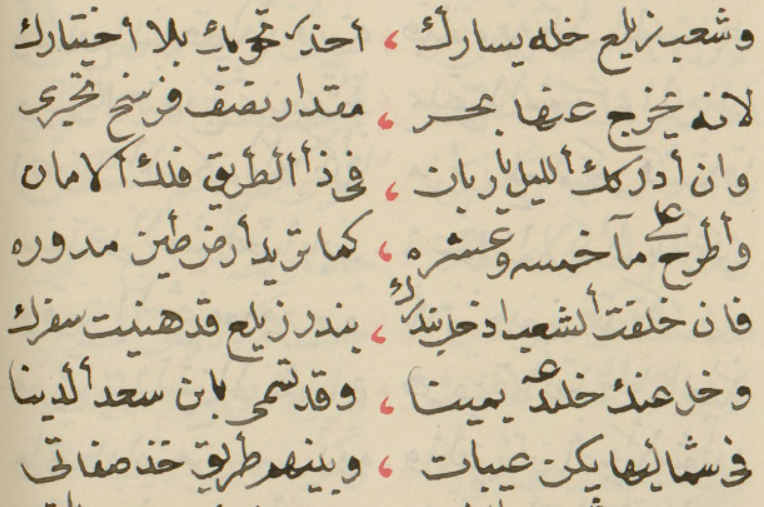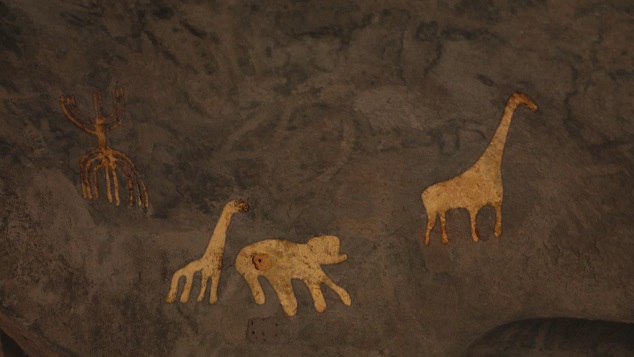|
Zeila Archipelago
The Sa'ad ad-Din Islands (, ), also Romanized as and known as the Zeila Archipelago, are a group of islands off the northwestern coast of Somalia. They are situated near the ancient city of Zeila. The Zeila Archipelago is made of six small islands all of which are low-lying and have sandy beaches. The largest of these islands are '' Sacadin'' and '' Aibat'', which are six and nine miles off the coast of Zeila, respectively. There is also a lighthouse at Aibat. Etymology & History The name for the archipelago comes from the Sultan Sa'ad ad-Din II who was killed by the Emperor of Abyssinia on the main island in 1403. Along with his name, there are many different spellings for the island such as , , and . The archpeligo is also known as the ''Zeila Archipelago'' and the ''Sa'ad ad-Din group''. Legendary Arab explorer Ahmad ibn Mājid wrote of the archipelago and a few other notable landmarks and ports of the northern Somali coast, including Zeila, Berbera, Xiis, Alula, Rug ... [...More Info...] [...Related Items...] OR: [Wikipedia] [Google] [Baidu] |
Somaliland
Somaliland, officially the Republic of Somaliland, is an List of states with limited recognition, unrecognised country in the Horn of Africa. It is located in the southern coast of the Gulf of Aden and bordered by Djibouti to the northwest, Ethiopia to the south and west, and Somalia to the east. Its claimed territory has an area of , with approximately 6.2 million people as of 2024. The capital and largest city is Hargeisa. Various Somali Muslim kingdoms were established in the area during the early Islamic period, including in the 14th to 15th centuries the Zeila-based Adal Sultanate. In the early modern period, successor states to the Adal Sultanate emerged, including the Isaaq Sultanate which was established in the middle of the 18th century. In the late 19th century, the United Kingdom signed agreements with various clans in the area, establishing the British Somaliland, Somaliland Protectorate, which was formally granted independence by the United Kingdom as the Sta ... [...More Info...] [...Related Items...] OR: [Wikipedia] [Google] [Baidu] |
Xiis
Heis (, ) is a historic coastal town located in the Sanaag region of Somaliland. The town was important for trade and communication with the Somali interior and was used to export frankincense to Arabia. History Antiquity The site said to be identical with the ancient trading post of Mundus () that is described in the ''Periplus of the Erythraean Sea'', an anonymous account by a Greek Alexandrian salesman from the 1st century CE. A large collection of cairns of various types lie near the city. Excavations here have yielded pottery and sherds of Roman glassware from a time between the 1st and 5th centuries. Among these artefacts is high-quality millefiori glass. Dated to 0-40 CE, it features red flower disks superimposed on a green background. Additionally, an ancient fragment of a footed bowl was discovered in the surrounding area. The sherd is believed to have been made in Aswan (300-500 CE) or Lower Nubia (500-600 CE), suggesting early trading ties with kingdoms in the Nile Va ... [...More Info...] [...Related Items...] OR: [Wikipedia] [Google] [Baidu] |
Coral
Corals are colonial marine invertebrates within the subphylum Anthozoa of the phylum Cnidaria. They typically form compact Colony (biology), colonies of many identical individual polyp (zoology), polyps. Coral species include the important Coral reef, reef builders that inhabit tropical oceans and secrete calcium carbonate to form a hard skeleton. A coral "group" is a colony of very many cloning, genetically identical polyps. Each polyp is a sac-like animal typically only a few millimeters in diameter and a few centimeters in height. A set of tentacles surround a central mouth opening. Each polyp excretes an exoskeleton near the base. Over many generations, the colony thus creates a skeleton characteristic of the species which can measure up to several meters in size. Individual colonies grow by asexual reproduction of polyps. Corals also breed sexually by spawning: polyps of the same species release gametes simultaneously overnight, often around a full moon. Fertilized eggs form ... [...More Info...] [...Related Items...] OR: [Wikipedia] [Google] [Baidu] |
Gulf Of Aden
The Gulf of Aden (; ) is a deepwater gulf of the Indian Ocean between Yemen to the north, the Arabian Sea to the east, Djibouti to the west, and the Guardafui Channel, the Socotra Archipelago, Puntland in Somalia and Somaliland to the south. In the northwest, it connects with the Red Sea through the Bab-el-Mandeb strait, and it connects with the Arabian Sea to the east. To the west, it narrows into the Gulf of Tadjoura in Djibouti. The Aden Ridge lies along the middle of the gulf, and tectonic activity at the ridge is causing the gulf to widen by about per year. The ancient Greeks regarded the gulf as one of the most important parts of the " Erythraean Sea". It later came to be dominated by Muslims, as the area around the gulf converted to Islam. From the late 1960s onwards, there was an increased Soviet naval presence in the Gulf. The importance of the Gulf of Aden declined while the Suez Canal was closed, but it was revitalized when the canal was reopened in 1975, af ... [...More Info...] [...Related Items...] OR: [Wikipedia] [Google] [Baidu] |
Oman
Oman, officially the Sultanate of Oman, is a country located on the southeastern coast of the Arabian Peninsula in West Asia and the Middle East. It shares land borders with Saudi Arabia, the United Arab Emirates, and Yemen. Oman’s coastline faces the Arabian Sea to the southeast and the Gulf of Oman on the northeast. The exclaves of Madha and Musandam Governorate, Musandam are surrounded by the United Arab Emirates on their land borders, while Musandam’s coastal boundaries are formed by the Strait of Hormuz and the Gulf of Oman. The capital and largest city is Muscat. With a population of approximately 5.46 million and an area of 309,500 km2 (119,500 sq mi), Oman is the Countries with highest population, 123rd most-populous country. From the 18th century, the Omani Sultanate was Omani Empire, an empire, competing with the Portuguese Empire, Portuguese and British Empire, British empires for influence in the Persian Gulf and the Indian Ocean. At its peak in the 19th ce ... [...More Info...] [...Related Items...] OR: [Wikipedia] [Google] [Baidu] |
Coral Reefs
A coral reef is an underwater ecosystem characterized by reef-building corals. Reefs are formed of colonies of coral polyps held together by calcium carbonate. Most coral reefs are built from stony corals, whose polyps cluster in groups. Coral belongs to the class Anthozoa in the animal phylum Cnidaria, which includes sea anemones and jellyfish. Unlike sea anemones, corals secrete hard carbonate exoskeletons that support and protect the coral. Most reefs grow best in warm, shallow, clear, sunny and agitated water. Coral reefs first appeared 485 million years ago, at the dawn of the Early Ordovician, displacing the microbial and sponge reefs of the Cambrian. Sometimes called ''rainforests of the sea'', shallow coral reefs form some of Earth's most diverse ecosystems. They occupy less than 0.1% of the world's ocean area, about half the area of France, yet they provide a home for at least 25% of all marine species, including fish, mollusks, worms, crustaceans, echinoderms ... [...More Info...] [...Related Items...] OR: [Wikipedia] [Google] [Baidu] |
Sheikh Bashir
Sheikh Bashir Sheikh Yusuf Sheikh Hassan (, , born c. 1905) was a Somali religious leader famed for leading the 1945 Sheikh Bashir Rebellion against the British colonial authority in Somaliland. Biography Sheikh Bashir was born in 1905 in Taleh, British Somaliland. Taleh was known as the Dervish capital and is located in the Sool region of Somaliland. Sheikh Bashir was a nephew of Mohammed Abdullah Hassan and was named by him. He hails from the Yeesif subclan of the Habr Je'lo Isaaq clan. Sheikh Bashir was cultivated at the Markaz (Centre) located in the village of Beer east of Burao and studied there in succession to his father. This Markaz was first established by Sheikh Bashir's grandfather Sheikh Hassan Fiqi Abdi as an educational centre where the Quran, hadith and other Islamic sciences were taught. According to the Somali historian and novelist Farah Awl the Sayyid had a significant influence on Sheikh Bashir through listening to his poetry and conversations, an inf ... [...More Info...] [...Related Items...] OR: [Wikipedia] [Google] [Baidu] |
El-Darad
El-Darad () was a historic coastal settlement and fort located in the Sahil region of Somaliland. History Legendary 15th century Arab explorer Ahmad ibn Mājid wrote of El-Darad and several other notable landmarks and ports of the northern Somali coast, including Berbera, the Sa'ad ad-Din islands (aka the Zeila Archipelago near Zeila), Alula, Ruguda, Maydh, Heis, Siyara and El-Sheikh. In the 19th century, El-Darad was a seasonal coastal trading settlement with a fort made of adobe (earth) and stone masonry, which was surrounded by Somali Aqal and Areesh (traditional nomadic and coastal dwellings respectively). The fort was erected in circa 1826 and was owned by Muhammad Diban, a Habr Je'lo ( Adan Madobe) pirate and slave trader based in El-Darad who garrisoned the fort with slaves armed with matchlock rifles. Muhammad Diban also had cordial relations with Sharmarke Ali Saleh – governor and ruler of Zeila, Berbera and Tadjoura – who provided Muhammad with five cannons ... [...More Info...] [...Related Items...] OR: [Wikipedia] [Google] [Baidu] |
Siyara
Siyara () was a historic coastal settlement and fort located in the Sahil region of Somaliland. It served as the first capital of the Adal Sultanate following the Muslim resurgence spearheaded by Sabr ad-Din II.Pankhurst, Richard. ''The Ethiopian Borderlands: Essays in Regional History from Ancient Times to the End of the 18th Century'' (Asmara, Eritrea: Red Sea Press, 1997), pp.56 Etymology The name of Siyara derives from the Somali word ''Siyaaro'', a term used to describe a localized annual pilgrimage to a holy site where the ancestor of a clan or a saint is buried. The Somali word ultimately derives from the Arabic word of the same meaning: ''ziyārah'' (زيارة). History Medieval Siyara was the site of the return of the Walashma dynasty. Sa'ad ad-Din II the last Sultan of Ifat had been slain in Zeila after losing the city to Emperor Dawit I after a siege. His sons had fled to Yemen and would soon return led by Sultan Sabr ad-Din II. Sabr crossed the Gulf of Aden ... [...More Info...] [...Related Items...] OR: [Wikipedia] [Google] [Baidu] |
Ceel-Sheekh
El-Sheikh () is a coastal settlement in the western edge of the Sahil region of Somaliland. History El-Sheikh was also known historically as ''Buurta Almis'' or جبل ألمس ''Jebel Amis'' after the nearby Mount Almis just south of the settlement. It was a well known landmark to navigators and legendary Arab explorer Ahmad ibn Mājid wrote of El-Sheikh and a few other notable landmarks and ports of the northern Somali coast, including Berbera, Siyara, the Sa'ad ad-Din islands aka the Zeila Archipelago near Zeila, Alula, Maydh, Ruguda, Heis and El-Darad. Richard Burton visited the settlement and noted the mountain in his map. After the Habr Awal massacre of Richard Burton's travel party and death of a number of British officers in 1854 led the Royal Navy to blockad the Ciise Muuse coast. The blockade was established from Mount Almis to Siyara and crippled trade in Berbera and Bulhar with a settlement being reached in 1856. El-Sheikh remained a well used by the Habr Awa ... [...More Info...] [...Related Items...] OR: [Wikipedia] [Google] [Baidu] |



